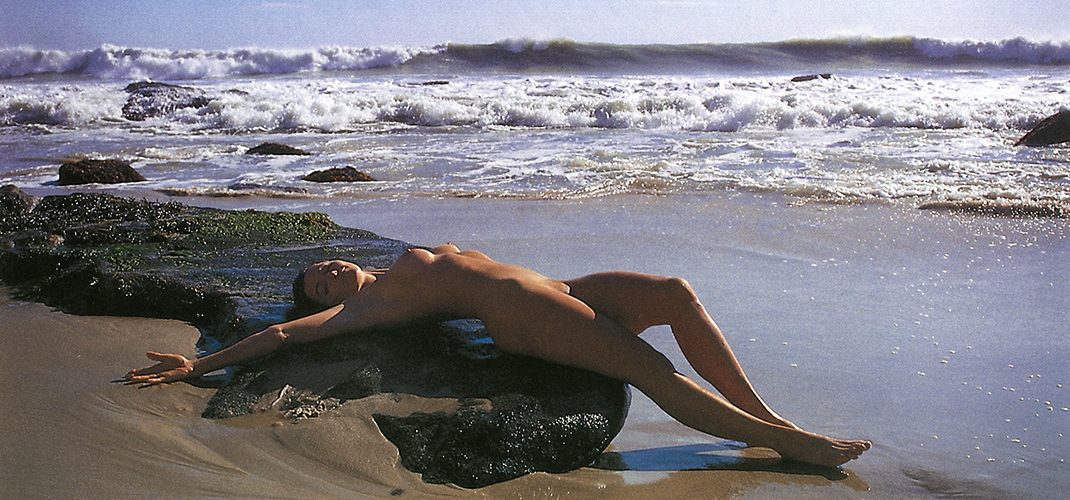“Photography As ART” script shows how James creates his art using only light, camera, and optics, in addition to considerable logistical planning, technical experimentation, patience and dedication.

INT – STUDIO – DARK
B&W shot of James sitting, dramatically lit in dark studio. Camera dollies forward until a HS is achieved.
JAMES:
Creative impulses come from within. Family, friends suggest “why don’t you do this or that,” meaning a shot of flowers, or landscape, a celebrity possibly?
CUT to photographs that would market well in Craft Shows.
“This is what people want,” as if successfully satisfying a Market should be the motivator and measure the value of what I created.
CUT to Pollock, Van Gogh, Vermeer, etc. as needed
I can tell you why do I create what I do, but I can’t justify the way I go about doing it. Why did Jackson Pollock favor a drip-style painting technique, while Vincent van Gogh’s used forceful impasto in applying his paints? My method is an illuminating technique.
CUT to a shot of the cover of the book. Pan the title. Show the whole cover and ZOOM IN and blur out until Narrator completed sentence and there’s the CUT to James.
NARRATOR:
The “Illusions” came next, and through them James wanted to experiment with many of the possibilities that could be applied in creating photographic art.
Image 12 shows the LIGHTHOUSE Illusion. Pull out from a tight shot on the distressed face of the MUSE.

CUT to James.
JAMES
All tell a story, simply as a classical representation, or in a historical context, or by visualizing a myth, a fantasy or otherwise by adding a surprising, sometimes a humorous twist to a scene. All are constructed and staged by logistical planning and using various camera, optical and lighting techniques.
NARRATOR:
This series began with the Lighthouse Illusion taken in 1987.
CUT to James
JAMES:
This one is a play on the damsel in distress, locked away in the ivory tower. All the Illusions have some underlying meaning for me. Most of the illusions are photographed in natural settings.
CUT to an old photo of Olmsted and some of his renown park locations.
I like this quote by Frederick Law Olmsted. He was known for bringing landscape architecture to prominence, designing many famous public parks in the US and Canada, including Central Park in N.Y.C. He said…
CUT to various parts, possibly of Priester Pond (the lake, farm, horse, Muse) Hay Path Road or other Illusions not prominently covered.
Image 13 shows the BLACK POND BRIDGE Illusion (have many more taken, not used, but could be?), overall and in various shots, pans and tilts, mixed in with image 14 of THE THREE GRACES.
NARRATOR
“A scene in nature is made up of various parts, each part has an individual character and its possible ideal. It is unlikely that accident should bring together the best possible ideals of each separate part, merely considering them as isolated facts, and it is still more unlikely that accident should group a number of these possible ideals in such a way that not only one or two but that all should be harmoniously related one to the other. It is evident, however, that an attempt to accomplish this artificially is not impossible…. The result would be a work of art…” Frederick Law Olmsted
NARRATOR:
Among the 37 Illusions included in this series is Black Pond Bridge. It represents classical art, were “the nude” is often used to represent ideal forms, balance, and harmony with nature.
JAMES:
It’s comparable to the three charities painted by Peter Paul Rubens: ideal forms equal ‘beauty’, balanced by ‘charm’, and having ‘grace’ in harmony with nature…
NARRATOR:
…Washed Up beautifully represents another classic subject that has been a subject for the arts, the reclining nude. In the early Renaissance Titian painted “Danae,” Goya painted “La maja desnuda” and Manet his “Olympia,” stripped of idealized mythology and confronting the viewer.
CUT to CU of face not confronting the viewer, then slowly pull back, that is zoom out with a little pan movement, but not all the way
Although the muse in Washed Up is not confronting the viewer, she is completely unmasked, and her idealized form set in this natural setting, like the nudes in the Danae Series, can only be an illusion.
CUT to the wave in background. TRACK it L/R or R/L, whatever works best and a point pull/ZOOM out to show entire piece.
Look at the incredible wave in the background. In mythology this vision before our eyes, was cast of with her son, fathered by Zues, to the ocean.
NARRATOR:
One final classical example is the “Lily Pond” illusion. Though “Hylas and the Nymphs” painted by William Waterhouse has a similar setting as this photograph, James views it similar to a Renoir’s painting “Les Grandes Baignueses.” Pierre Auguste Renoir was an impressionist, but in this piece his female forms are brushed in the classical style and only the background is impressionistic. The same effect was created in this photograph.
CUT to old American prints showing canoes, Lewis & Clark or Indians with canoes.
Note: The canoe is a clear reminder that this was taken in an America setting. By the way, unseen, its bow was filled with concrete blocks to balance proper staging.
JAMES:
There are many important little things to do to make it work!
THE END of Scene Three